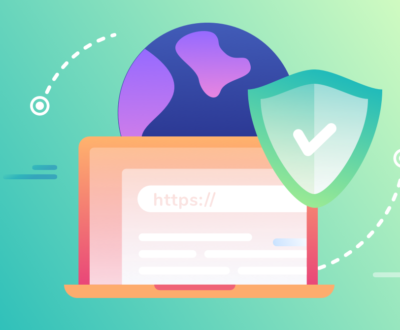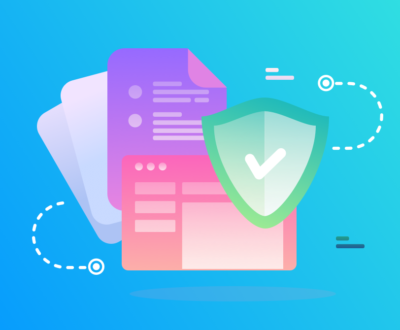Cyber Threat Hunting: Proactively Defending Against Cyber Threats
- July 22, 2024
- Web Design
In the ever-evolving landscape of cybersecurity, the traditional reactive approach to cyber defense is no longer sufficient. With cyber threats becoming increasingly sophisticated and persistent, organizations must adopt proactive measures to protect their digital assets. One such measure is cyber threat hunting, a strategic practice that involves actively seeking out potential threats before they can cause significant harm. Click here
What is Cyber Threat Hunting?
Cyber threat hunting is a proactive cybersecurity technique that involves the continuous and iterative search for signs of malicious activities within a network or system. Unlike traditional security measures, which often rely on automated tools and predefined rules to detect threats, threat hunting is a human-driven process. It leverages the expertise and intuition of skilled analysts to uncover hidden threats that may evade automated detection.To know more about this, please click on the link: https://r.search.yahoo.com/_ylt=AwrKBxMoyp1mVY47.Q7jPwx.;_ylu=Y29sbwNzZzMEcG9zAzEEdnRpZAMEc2VjA3Ny/RV=2/RE=1721645736/RO=10/RU=https%3a%2f%2fwww.crowdstrike.com%2fcybersecurity-101%2fthreat-hunting%2f/RK=2/RS=UdQilQCCRcn_qiLXntYtqo.anTk-
The Importance of Cyber Threat Hunting
- Proactive Defense: Traditional security measures, such as firewalls and intrusion detection systems, are essential but often reactive. They respond to threats after they have been identified. Threat hunting, on the other hand, is proactive, allowing organizations to identify and mitigate threats before they can cause damage.
- Advanced Threat Detection: Cybercriminals are constantly developing new tactics to bypass security measures. Threat hunters use their knowledge of these tactics to identify and neutralize threats that may go unnoticed by automated systems.
- Reducing Dwell Time: Dwell time refers to the duration a threat remains undetected within a network. The longer a threat lingers, the more damage it can cause. Threat hunting helps reduce dwell time by continuously monitoring and investigating suspicious activities.
- Enhancing Incident Response: Threat hunters often uncover valuable information about the nature and behavior of threats. This intelligence can be used to improve incident response strategies, enabling quicker and more effective mitigation of future attacks.
The Threat Hunting Process
The process of cyber threat hunting typically involves several key steps:
- Hypothesis Generation: Threat hunters begin by developing hypotheses about potential threats based on their knowledge of the organization’s environment and threat landscape. These hypotheses guide the hunting process.
- Data Collection: Threat hunters gather data from various sources, including network traffic, logs, and endpoint activities. This data provides the foundation for identifying anomalies and suspicious behaviors.
- Data Analysis: Using advanced analytics and threat intelligence, hunters analyze the collected data to identify patterns and indicators of compromise (IOCs). This step often involves the use of specialized tools and techniques to sift through large volumes of data.
- Investigation: Once potential threats are identified, threat hunters conduct thorough investigations to determine the nature and scope of the threat. This may involve reverse engineering malware, analyzing command and control (C2) communications, and examining affected systems.
- Response and Mitigation: After confirming a threat, hunters work with incident response teams to contain and mitigate the threat. This may involve isolating affected systems, removing malware, and implementing additional security measures to prevent recurrence.
Tools and Techniques for Threat Hunting
Effective threat hunting relies on a combination of advanced tools and techniques:
- Behavioral Analytics: Analyzing user and entity behavior to detect anomalies that may indicate malicious activity.
- Threat Intelligence: Leveraging external and internal threat intelligence to identify known threats and tactics.
- Machine Learning: Using machine learning algorithms to identify patterns and predict potential threats.
- Hunting Platforms: Specialized platforms that provide centralized data collection, analysis, and visualization capabilities.
- Scripting and Automation: Custom scripts and automated workflows to streamline data analysis and threat detection.
Challenges and Best Practices
Threat hunting is a complex and resource-intensive process that presents several challenges:
- Skill Shortage: Effective threat hunting requires highly skilled analysts with deep knowledge of cybersecurity and threat tactics.
- Data Overload: The sheer volume of data generated by modern networks can overwhelm analysts. Effective data management and analysis are crucial.
- Evolving Threats: Cyber threats are constantly evolving, requiring hunters to stay updated with the latest threat intelligence and tactics.
To overcome these challenges, organizations should consider the following best practices:
- Continuous Training: Invest in ongoing training and development for threat hunters to keep their skills sharp and up-to-date.
- Collaboration: Foster collaboration between threat hunters, incident response teams, and other cybersecurity professionals.
- Leveraging Automation: Use automation to handle routine tasks and free up hunters to focus on more complex investigations.
- Comprehensive Threat Intelligence: Integrate threat intelligence from multiple sources to enhance the effectiveness of threat hunting.
Conclusion
In a world where cyber threats are becoming more sophisticated and persistent, cyber threat hunting offers a proactive defense strategy that can significantly enhance an organization’s cybersecurity posture. By actively seeking out and neutralizing threats before they can cause harm, threat hunting helps reduce risk, improve incident response, and safeguard critical digital assets. As cyber threats continue to evolve, the importance of threat hunting will only grow, making it an indispensable component of modern cybersecurity strategies.
- advanced threat detection, behavioral analytics, cyber threats, cybersecurity, cybersecurity best practices, cybersecurity strategy, data analysis, data collection, endpoint security, hunting platforms, incident response, intrusion detection, machine learning, malware, network security, proactive defense, security monitoring, security operations, threat hunting, threat intelligence
About us and this blog
We are a digital marketing company with a focus on helping our customers achieve great results across several key areas.
Request a free quote
We offer professional SEO services that help websites increase their organic search score drastically in order to compete for the highest rankings even when it comes to highly competitive keywords.
Subscribe to our newsletter!
More from our blog
See all postsRecent Posts
- Cyber Threat Hunting: Proactively Defending Against Cyber Threats July 22, 2024
- Custom Web Design: The Power of Elevating Your Online Presence July 19, 2024
- Is Search Engine Submission Necessary? April 17, 2014








